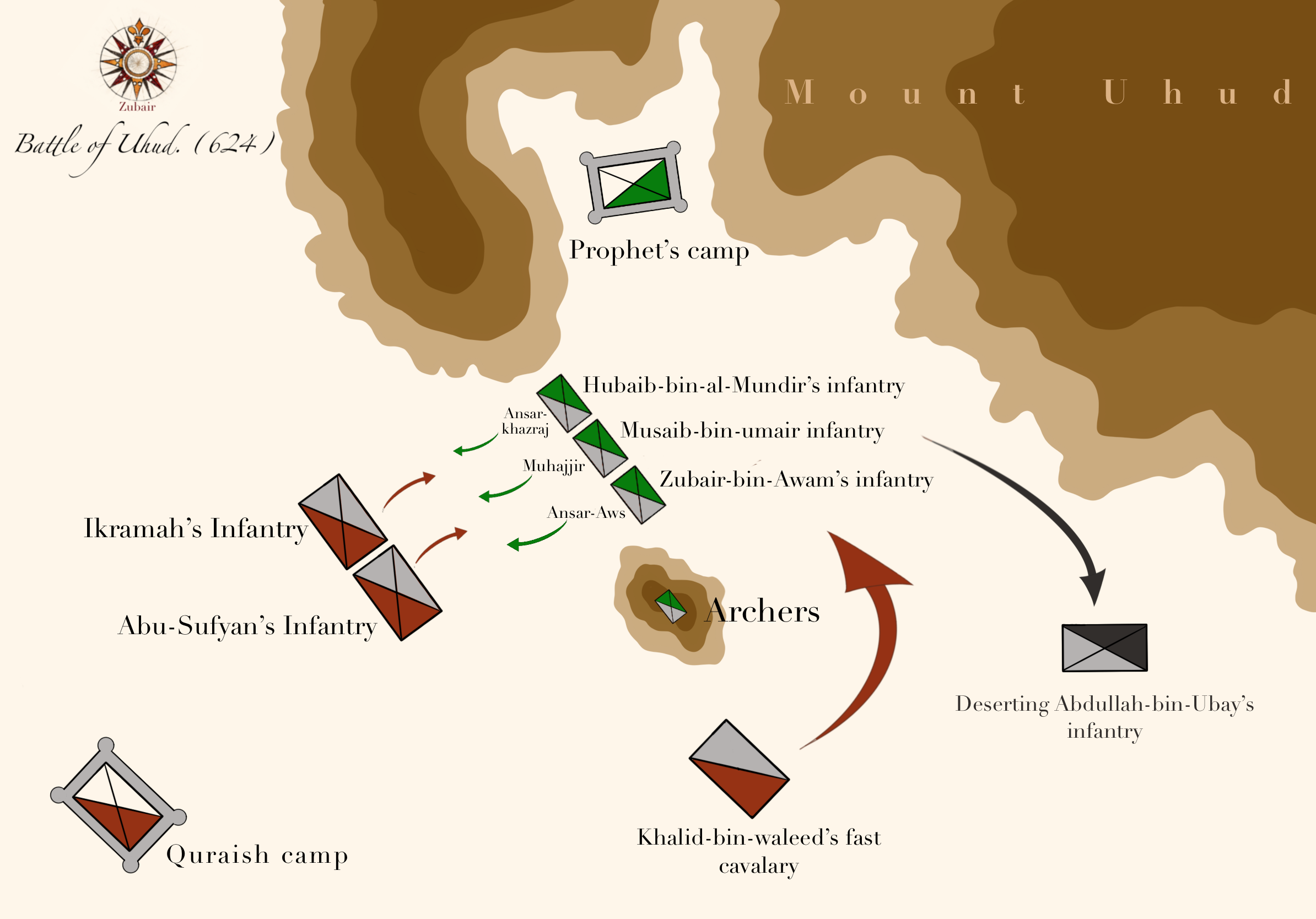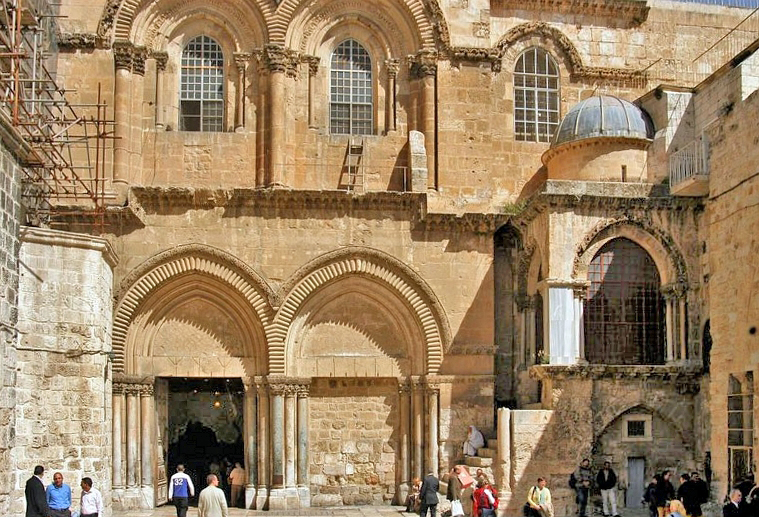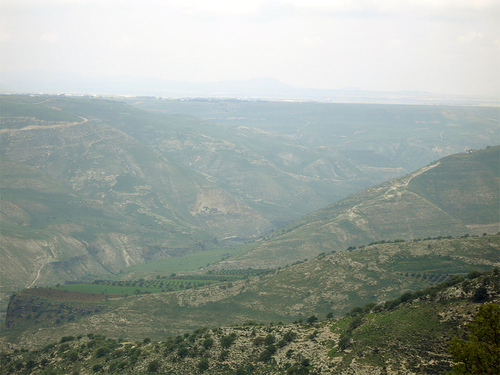|
Aretion
Aretion () was a Byzantine governor of Jerusalem during the reign of Heraclius (), and a general in the Arab–Byzantine wars. He is described by al-Tabari as "the most cunning of the Byzantines, the most far-sighted, and the most harmful". Name Since Aretion is not easily identifiable with anyone attested in Byzantine sources, his original Greek name is unknown. Most Arab sources give his name as "Arṭabūn" ( أرطبون), with a few (like Abu 'l Mahasin and Al-Waqidi) instead calling him "Areṭîūn" (ارطيون). Hendrik Arent Hamaker translated the latter into Latin as "Aretion". Alfred J. Butler believed that "Aretion" was the correct form and "Artabun" was a corruption. An alternate translation is " Artabanus". However, some historians (such as Michael Jan de Goeje) believe that "Artabun" may not be a name at all, but rather a corruption of the Roman title '. This allows Aretion to be identified with other attested figures. Walter Kaegi believed he "may be identic ... [...More Info...] [...Related Items...] OR: [Wikipedia] [Google] [Baidu] |
Cyrus Of Alexandria
Cyrus of Alexandria ( '' al-Muqawqis'', ; 6th century – 21 March 642) was a prominent figure in the 7th century. He served as a Greek Orthodox Patriarch of Alexandria and held the position of the second-last Byzantine prefect of Egypt. As Prefect, he heavily persecuted the Copts, and during the Arab conquest of Egypt, continually pushed for surrender and sabotaged the Byzantine military's defence of the country. Notably, he also played a significant role in the development of monothelitism. Cyrus died in Alexandria on March 21, 642. Early life Cyrus was born in the late 6th century. He was from the Caucasus region, hence the nickname Al-Muqawqis, from the Coptic ⲡⲓⲕⲁⲩⲕⲟⲥ meaning "the Caucasian". He had a sister, who married Domentianus the governor of Faiyum. Arab sources (mainly Al-Waqidi) name various other relatives of Cyrus, such as a daughter named '' Armenousa'', another daughter ''Luliyah'', two sons ''Aristulis'' and ''Paul'', a brother ''Andrew' ... [...More Info...] [...Related Items...] OR: [Wikipedia] [Google] [Baidu] |
Battle Of Ajnadayn
The Battle of Ajnadayn () was fought in July or August 634 ( Jumada I or II, 13 AH), in a location close to Bayt Jibrin in Palestine; it was the first major pitched battle between the Byzantine (Roman) Empire and the army of the Arab Rashidun Caliphate. The result of the battle was a decisive Muslim victory. The details of this battle are mostly known through Muslim sources, such as the ninth-century historian al-Waqidi. Sources Regarding the primary sources, there is an absence of any of Byzantine provenance; possibly, according to Walter Kaegi, because what Byzantine material exists may conflate the battle with other Byzantine defeats, such as Dathin and Yarmouk. The earliest source appears to be an entry in the Frankish '' Chronicle of Fredegar'', compiled in 658-660, unless this is a possible interpolation. Background According to David Nicolle, the Rashidun army left the capital Medina probably in the autumn of 633, but possibly at the beginning of 634. They first ... [...More Info...] [...Related Items...] OR: [Wikipedia] [Google] [Baidu] |
Khalid Ibn Walid
Khalid ibn al-Walid ibn al-Mughira al-Makhzumi (; died 642) was a 7th-century Arab military commander. He initially led campaigns against Muhammad on behalf of the Quraysh. He later became a Muslim and spent the remainder of his career serving Muhammad and the first two Rashidun caliphs: Abu Bakr and Umar. Khalid played leading command roles in the Ridda Wars against rebel tribes in Arabia in 632–633, the initial campaigns in Sasanian Iraq in 633–634, and the conquest of Byzantine Syria in 634–638. As a horseman of the Quraysh's aristocratic Banu Makhzum clan, which ardently opposed Muhammad, Khalid played an instrumental role in defeating Muhammad and his followers during the Battle of Uhud in 625. In 627 or 629, he converted to Islam in the presence of Muhammad, who inducted him as an official military commander among the Muslims and gave him the title of (). During the Battle of Mu'ta, Khalid coordinated the safe withdrawal of Muslim troops against the Byzant ... [...More Info...] [...Related Items...] OR: [Wikipedia] [Google] [Baidu] |
Bilbeis
Bilbeis ( ; Bohairic ' is an ancient fortress city on the eastern edge of the southern Nile Delta in Egypt, the site of the ancient city and former bishopric of Phelbes and a Latin Catholic titular see. The city is small in size but densely populated, with over 407,300 residents. It also houses the Egyptian Air Force Academy complex, which contains the town's largest public school in Al-Zafer. Coptic tradition says that Bilbeis was one of the stopping places of the Holy Family during the Flight into Egypt. History The city was important enough in the Roman province of Augustamnica Secunda to become a bishopric. Situated on a caravan and natural invasion route from the east, Bilbeis was conquered in 640 by the Arabs. Amr ibn al-As besieged and took the city defended by a Byzantine general called al-Ardubun. According to a Muslim legend, Armanusa, the daughter of Muqawqis lived in Bilbeis. In 727 some of the Qays tribe were resettled here and later chain of fort ... [...More Info...] [...Related Items...] OR: [Wikipedia] [Google] [Baidu] |
Pelusium
Pelusium (Ancient Egyptian: ; /, romanized: , or , romanized: ; ; ; ; ) was an important city in the eastern extremes of Egypt's Nile Delta, to the southeast of the modern Port Said. It became a Roman provincial capital and Metropolitan archbishopric and remained a multiple Catholic titular see and an Eastern Orthodox active archdiocese. Location Pelusium lay between the seaboard and the marshes of the Nile Delta, about two-and-a-half miles from the sea. The port was choked by sand as early as the first century BC, and the coastline has now advanced far beyond its ancient limits that the city, even in the third century AD, was at least four miles from the Mediterranean. The principal product of the neighbouring lands was flax, and the ''linum Pelusiacum'' (Pliny's Natural History xix. 1. s. 3) was both abundant and of a very fine quality. Pelusium was also known for being an early producer of beer, known as the Pelusian drink. Pelusium stood as a border-fortress, a place ... [...More Info...] [...Related Items...] OR: [Wikipedia] [Google] [Baidu] |
Siege Of Jerusalem (636–637)
The siege of Jerusalem (636–637) was part of the Muslim conquest of the Levant and the result of the military efforts of the Rashidun Caliphate against the Byzantine Empire in the year 636–637/38. It began when the Rashidun army, under the command of Abu Ubayda, besieged Jerusalem beginning in November 636. After six months, Patriarch Sophronius agreed to surrender, on condition that he submit only to the caliph. In 637 or 638, Caliph Umar () traveled to Jerusalem in person to receive the submission of the city. The patriarch thus surrendered to him. The Muslim conquest of the city solidified Arab control over Palestine, which remained part of various Sunni Caliphates until the Shia-led Fatimid Caliphate took over in 969. In 1073 the Seljuk Turks took control of Jerusalem, and Christian rulers regained control at the time of the First Crusade in 1099. Background Jerusalem was an important city of the Byzantine province of Palaestina Prima. Just 23 years prior to the ... [...More Info...] [...Related Items...] OR: [Wikipedia] [Google] [Baidu] |
Sophronius Of Jerusalem
Sophronius (; ; c. 560 – March 11, 638), called Sophronius the Sophist, was the Greek Orthodox Patriarch of the city known as Aelia Capitolina and then Jerusalem from 634 until his death. He is venerated as a saint in the Eastern Orthodox and Catholic Churches. Before rising to the primacy of the See, he was a monk and theologian who was the chief protagonist for orthodox teaching in the doctrinal controversy on the essential nature of Jesus and his volitional acts. He is also renowned for the negotiation of the surrender of Aelia Capitolina to the Rashid caliph Umar in 637/8. Travels Sophronius was born in Damascus around 560. He has been claimed to be of Byzantine Greek or Syriac descent. Sophronius became an ascetic in Roman Egypt about 580 and then entered the Monastery of Saint Theodosius near Bethlehem. A teacher of rhetoric, he travelled to monastic centres in Anatolia, Egypt, and Rome. He accompanied the Byzantine chronicler John Moschus, who dedicated to him his c ... [...More Info...] [...Related Items...] OR: [Wikipedia] [Google] [Baidu] |
Gustav Weil
Gustav Weil (25 April 1808 – 29 August 1889) was a German oriental studies, orientalist and one of the earliest academic practitioners of Quranic studies. Biography Weil was born in Sulzburg, then part of the Grand Duchy of Baden. Being destined for the rabbinate, he was taught Hebrew language, Hebrew, as well as German and French; and he received instruction in Latin from the minister of his native town. At the age of twelve he went to Metz, where his grandfather was rabbi, to study the Talmud. For this, however, he developed very little taste, and he abandoned his original intention of entering upon a theological career. In 1828 he entered the University of Heidelberg, devoting himself to the study of philology and history; at the same time he studied Arabic under Umbreit. Though without means, he nevertheless went to study under De Sacy in Paris in 1830, and thence followed the French military expedition to Algiers, acting as correspondent at Algiers for the Augsburger ''All ... [...More Info...] [...Related Items...] OR: [Wikipedia] [Google] [Baidu] |
Chronicle Of Fredegar
The ''Chronicle of Fredegar'' is the conventional title used for a 7th-century Frankish chronicle that was probably written in Burgundy. The author is unknown and the attribution to Fredegar dates only from the 16th century. The chronicle begins with the creation of the world and ends in AD 642. There are also a few references to events up to 658. Some copies of the manuscript contain an abridged version of the chronicle up to the date of 642, but include additional sections written under the Carolingian dynasty that end with the death of Pepin the Short in 768. The ''Chronicle of Fredegar'' with its ''Continuations'' is one of the few sources that provide information on the Merovingian dynasty for the period after 591 when Gregory of Tours' the ''Decem Libri Historiarum'' finishes. Authorship None of the surviving manuscripts specify the name of the author. The name "Fredegar" (modern French Frédégaire) was first used for the chronicle in 1579 by Claude Fauchet in his ... [...More Info...] [...Related Items...] OR: [Wikipedia] [Google] [Baidu] |
Amr Ibn Al-As
Amr ibn al-As ibn Wa'il al-Sahmi (664) was an Arab commander and companion of Muhammad who led the Muslim conquest of Egypt and served as its governor in 640–646 and 658–664. The son of a wealthy Qurayshite, Amr embraced Islam in and was assigned important roles in the nascent Muslim community by the Islamic prophet Muhammad. The first caliph Abu Bakr () appointed Amr as a commander of the conquest of Syria. He conquered most of Palestine, to which he was appointed governor, and helped lead the Arabs to decisive victories over the Byzantines at the battles of Ajnadayn and the Yarmuk in 634 and 636. Amr launched the conquest of Egypt on his own initiative in late 639, defeating the Byzantines in a string of victories ending with the surrender of Alexandria in 641 or 642. It was the swiftest of the early Muslim conquests. This was followed by westward advances by Amr as far as Tripoli in present-day Libya. In a treaty signed with the Byzantine governor Cyrus, Amr guar ... [...More Info...] [...Related Items...] OR: [Wikipedia] [Google] [Baidu] |
Umar
Umar ibn al-Khattab (; ), also spelled Omar, was the second Rashidun caliph, ruling from August 634 until his assassination in 644. He succeeded Abu Bakr () and is regarded as a senior companion and father-in-law of the Islamic prophet Muhammad. Initially, Umar opposed Muhammad, who was his distant Qurayshite kinsman. However, after converting to Islam in 616, he became the first Muslim to openly pray at the Kaaba. He participated in nearly all of Muhammad’s battles and expeditions, and Muhammad conferred upon him the title ''al-Fārūq'' ("the Distinguisher") for his sound judgement. After Muhammad’s death in June 632, Umar pledged allegiance to Abu Bakr as the first caliph and served as his chief adviser. In 634, shortly before his death, Abu Bakr nominated Umar as his successor. During Umar’s reign, the caliphate expanded at an unprecedented rate, conquering the Sasanian Empire and more than two-thirds of the Byzantine Empire. His campaigns against the Sasanian ... [...More Info...] [...Related Items...] OR: [Wikipedia] [Google] [Baidu] |
Theodore (brother Of Heraclius)
Theodore (, ; fl. c. 610 – 636) was the brother (or half-brother) of the Byzantine emperor Heraclius (), a ''curopalates'' and leading general in Heraclius' Byzantine-Sassanid War of 602–628, wars against the Persians and against the Muslim conquest of Syria, Muslim conquest of the Levant. Life He was the son of the general and exarch of Africa Heraclius the Elder, and is usually regarded as the brother (although John of Nikiu suggests him to be the half-brother) of Heraclius. Soon after Heraclius' overthrow of the emperor Phocas (r. 602–610), Theodore was appointed to the crucial post of ''curopalates'', controlling the palace administration, which at the time was ranked second in importance only to the imperial office itself.Martindale, Jones & Morris (1992), p. 1278 In 612, after the deposition and imprisonment of the ''magister militum per Orientem'' Priscus (magister militum), Priscus, command of his troops was assumed by Theodore and Philippicus (comes excubitorum), ... [...More Info...] [...Related Items...] OR: [Wikipedia] [Google] [Baidu] |






